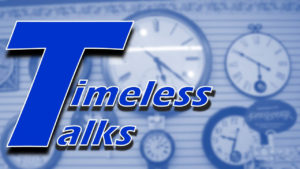"Technology: Helping or Hurting?"
Transcript
Written by Tim Estes
You can:
- DOWNLOAD offline on your computer/tablet/phone as a PDF file and read it anytime, OR
- Use the CONTACT LINK above (under Services) to request your collection be sent to you via USPS. This will REQUIRE you to include your mailing address (U.S. only).
“Technology: Helping or Hurting?”
People need people. No man is a rock. No man is an island. But is technology aiding or interfering with your relationships? Especially your relationships at work, at school, and at home? And where do you go to get the BEST answer? Do you use technology to search for answers?
We will give you the answer to whether or not technology is your friend or not from a most dependable source.
Intro
Let’s start by understanding the question as presented: “Is technology helping or hurting my relationships?”
The obvious part is that of a single choice. It is either helping or hurting.
But all relationships are not like a switch, either all the way on or all the way off. You need to see relationships as a spectrum. When a relationship is hot, exciting, and wonderful, it is on the hot end of the spectrum. When a relationship is cold, almost non-existent, it is on the other end of the spectrum. Love is on one end, and hate is on the other.
So, in the real world, most relationships are not at the extremes, but are somewhere in the middle.
We all hope that our friendships are on the warm end. That is where things are most helpful. People are caring for each other. They are constantly in contact with each other. It is where people realize that mistakes and relationships are injured, but those events can be forgiven, and the relationship restored, and yes, even made stronger.
And the opposite is also true for the cooler end of the spectrum. People are more self-centered. They choose not to engage with each other frequently. Naw, make that seldom do they interact. Here, the same mistakes happen and relationships are injured, but this time, the events are remembered. The problem becomes the focus. “Self” does not want to experience such events again, so the relationships continue to degrade, getting cooler and cooler. Eventually, the relationship that was once vibrant and warm has become cold, even frozen. The relationship is then avoided at all costs.
So, WHERE on the spectrum is the relationship? Is the relationship already at the warm end, or is it at the cool end of the spectrum? Understand: It is not about “helping” or about “hurting”. It is simply a spectrum.
So, the degree to which the answer is “helping” or the degree to which it is “hurting” depends on where you are currently on the spectrum.
Now let’s examine the idea of technology.
Since you are watching this video, it tells me that you are using technology to look for answers. This requires you to trust the makers of ANY video, even this one. We are thankful you have some degree of confidence in what we are saying.
But that trust itself can be good or it can be tragic. So, the degree of TRUST you put in YouTube creators, as an example, is also on a spectrum. It can be at either extreme, but most likely your trust is somewhere in the middle.
Are you talking with your friends about what harms and helps relationships? If you visit with your friends, you are using relationships to find the answer. This shows you trust your friends as the ultimate source.
But they are just people like you are, and the best they can give is their ideas. And their ideas are just as dependable as your ideas. But you are not trusting your ideas, or you would not have this question. Some of your friends may be wise and more trustworthy, but others are foolish and should not be trusted at all. Again, you are seeing a spectrum. And trust is somewhere in the middle. So, if you are using Facebook as a source for reaching many so-called “friends” quickly, you should be careful.
So, where can you find an answer that is always correct? A source that doesn’t have spectrum, but is simple and exact?
The best source was created by the very one who made you. You are not the result of an accident that came billions of years after a cataclysmic explosion, which evolved into various creatures. You were designed by a designer, and given a special spirit – that part that makes you human. That spirit came from God. And God supplies you with a source that is ALWAYS CORRECT. It is the Bible. And its answers are not on a spectrum. Always true. Always exact.
With such a great source available, let’s examine just a few examples of relationships and if technology was helpful or harmful.
For example, Adam and Eve. The 1st husband and wife. We are not told anywhere in the Bible about problems in their relationship. So, we might put them on the warm end of the spectrum.
What technology did they use? Yeah, that is a dumb question. There was no technology. And that is the point. Good relationships are developed and maintained for a lifetime where there are direct, face-to-face interactions. Where each person is more interested in the other person than in themselves. But that is what we read from the New Testament in Philippians 2:3 “Do nothing from selfish ambition or conceit, but in humility COUNT OTHERS MORE SIGNIFICANT THAN YOURSELVES.”
Another example was Cain and Abel. Brothers. The only brothers anywhere. As brothers, their relationship was likely on the warm end of the spectrum. Then, both offered worship to God. Abel’s worship was accepted by God. Cain’s was not. But God made sure Cain was allowed to change and become acceptable. Instead, Cain became jealous of his brother. The relationship began to cool off. Genesis 4:8 tell us “Cain spoke to Abel his brother. And when they were in the field, Cain rose up against his brother Abel and killed him.”
What technology did they use? There was none. But what happened to the relationship? It went to the extreme. Not just cold. Frozen. Deadly. Technology did not help or hurt, but the relationship cooled because problems were not addressed face-to-face.
Later, there was Isaac and Rebekah. Again, a wonderful relationship that was on the very warm end, maybe even hot. Genesis 24:67 “Then Isaac …took Rebekah, and she became his wife, and he loved her…” Again, no technology was mentioned, but both parties worked together. The relationship was outstanding.
Next, notice their kids, Jacob and Esau, the Twins. But Isaac had a favorite child, Esau. And Rebekah had her favorite, too. It was Jacob. Jacob tricked Esau, and Jacob gained the cherished “blessing” from their blind father, Isaac. This resulted in a severe chilling between the brothers. Esau wanted to kill Jacob. Jacob ran for his life to a very distant land where his mother’s family lived. He stayed there for many years.
What technology was used? Well, if you call the feel and smell of animal skins, used to create the deception, if that could be called “technology” by their standards, then it was used in a harmful way. But if you say that is not technology, well, then it was not harmful. But the relationship of hatred and a desire to kill by Esau, coupled with Jacob’s fear, resulted in an extremely cold relationship.
Let’ me share with you some of Paul’s relationships. Paul had traveled extensively in current-day Turkey and Greece. He taught and preached Jesus to many Jews and Gentiles. After many years, he found himself isolated in Rome as a prisoner. How can a confined Paul communicate with the people he loves? Ah, yes, he had technology. It was called “letters”, or epistles. He used his kind of “technology” to “send text messages” to individual Christians like Titus and Philemon. He dictated lengthy letters to Ephesus, Philippi, and Colossae. In those hand-written text messages were instructions on what was expected of them, how they could change for the better, and how much he loved and missed them.
Technology was being used. Relationships that were drifting toward the cool end of the spectrum because of the long period of separation were being re-warmed. Relationships were improving with the use of technology.
The first movable-type printing press was invented by Johannes Gutenberg around 1440 in Mainz, Germany. 600 years ago, a new kind of technology was developing. The Bible was the first major book printed using the new technology. It is known as the Gutenberg Bible, completed around 1455. Technology was being used for good.
Good relationships grew and flourished because of the printed Bible. But when people have selfish ambitions to teach or preach a doctrine other than the Bible itself, anger, jealousy, and pride occur. Denominations and divisions that God despises continue to develop using the printed or electronic Bible.
But has hate speech ever been printed on paper? Technology is used to destroy any and every kind of relationship.
Technology can be used in either direction.
You can use a cell phone to stay in close touch with your co-workers to create a great team. It can help you save time so that you can spend time face-to-face with family. But that same phone can be used to insult and injure a husband or wife, children, and anyone we have a relationship with.
It is not the technology. Technology is inanimate. It can be used to hurt or to help.
So with the Bible’s help, we have determined that technology is in the hands of the user.
Here at Timeless Talks, we are providing you with Timeless Subjects in such a way as to inform you of a better kind of life, even an eternal one.
If you have any questions about this subject or any Bible subject, we would love to hear from you. Here are 2 ways. 1st, you can call this number and ask your question in a voice recorded message, or use the same number to text your question or comment. This is using your phone as a technological tool to find Bible answers. The second method, a different technology, uses a browser on your phone, tablet, or computer to visit us at TimelessTalks.Net. There you will find lots of videos, and Free downloadable booklets and transcripts. You can also sign up for an email newsletter and text notifications, and you can use the contact page or prayer request page.
Thank you for watching. Let’s visit again real soon, ok? Maybe tomorrow. Until then, Goodbye for now.

